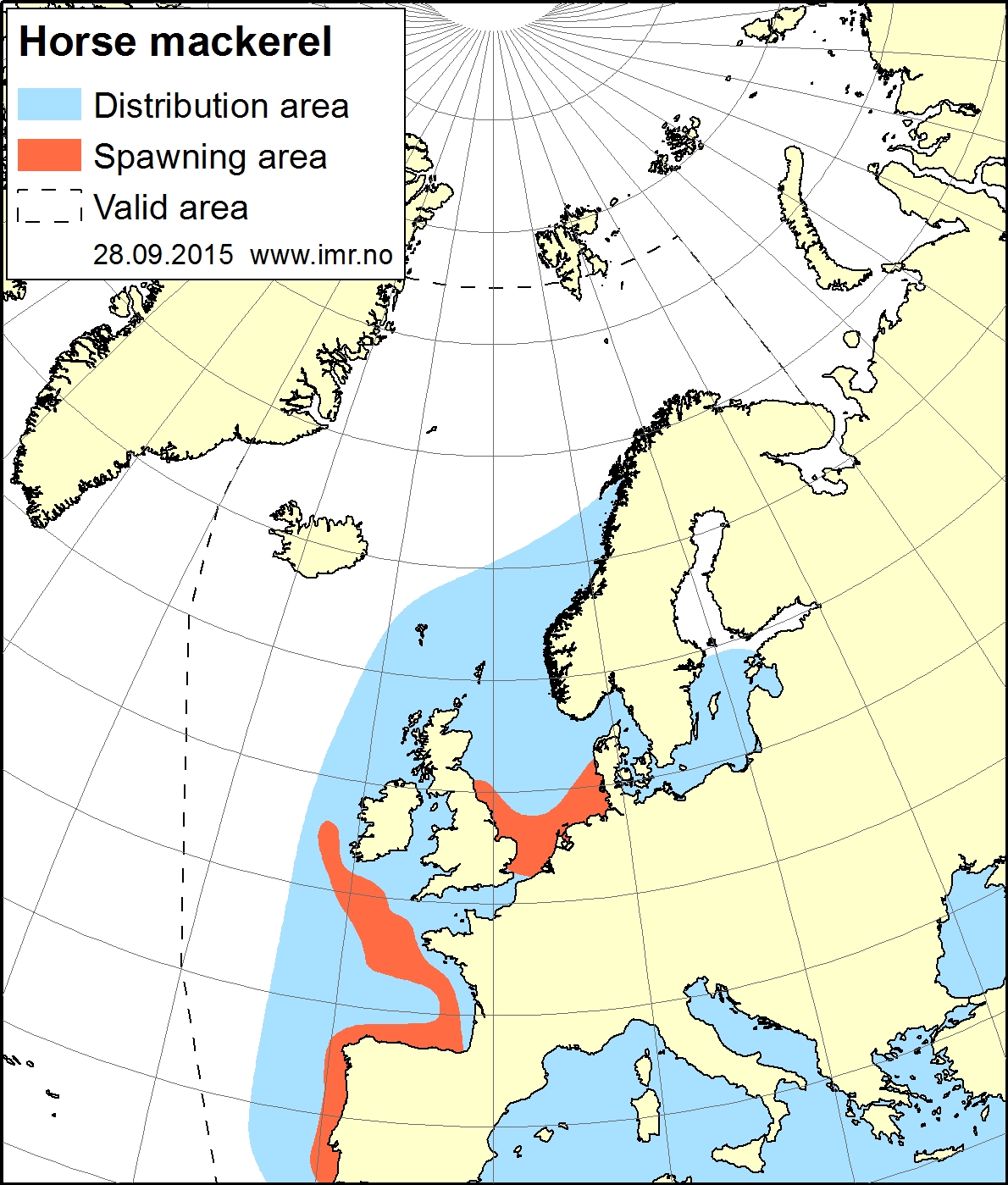Topic: Horse mackerel

Horse mackerel (Trachurus trachurus)
Photo: Institute of Marine ResearchHorse mackerel and NEA mackerel
Photo: Erling Svensen / IMRPublished: 24.03.2020 Updated: 02.06.2022
In earlier years most of the catches were used for meal and oil, while in later years most of the catches have been used for human consumption. Horse mackerel is a healthy fish with a light flavor, prepared in many ways including as sushi in Asia.
Horse mackerel belongs to the Carangidae family in contrast to mackerel, which belongs to the mackerel family. In European areas there are three horse mackerel populations which has its names according to their spawning areas.
Distribution and biology
The horse mackerel is widely distributed in the Northeast Atlantic from Africa to the Norwegian Sea at 66°N, including in the Mediterranean Sea, Black Sea and Skagerrak. The western horse mackerel are spawning in vast areas and over long time periods, in a similar way as Atlantic mackerel. Western horse mackerel have a peak spawning from late spring to early summer. They normally spawn from the Bay of Biscay to west of the British Isles. After spawning, parts of the stock migrate northwards to productive waters and feeding in the northern North Sea, Norwegian Sea and along the coast of Norway. The largest fish tend to travel farthest to the north.
Stock development and status
The stock is very dependent on occasional high recruitments. After a series of low recruitments, the estimates since 2014 are above average (1983–2019). Spawning stock biomass has been declining since 2006, whereas fishing mortality has decreased since 2013. The western horse mackerel stock is at present not in a healthy state, predominantly due to low recruitment over many years.
Fishery
The two major fishing gear for western horse mackerel are pelagic trawl and purse seine. Norway has a directed purse seine fishery for horse mackerel predominantly taking place annually during autumn in the southeastern part of the Norwegian Sea and northeastern part of the North Sea. The Norwegian catches of western horse mackerel has varied a lot from about 5000 and 70 000 tons over the last 10 years, with a rapid decrease in catches during the last few years coinciding with reduced stock size and availability in northern waters.
Food
In earlier years most of the catches were used for meal and oil, while in later years most of the catches have been used for human consumption. Horse mackerel is a healthy fish and a good source of Omega-3 fatty acids. They have a light flavor and popular to prepare as grilled, smoked, canned and also as sushi, particularly in Japan.
